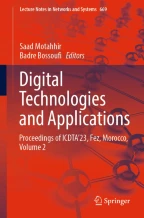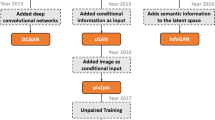Medical Image Segmentation Using Deep Learning: A Survey

During the last few years, medical image segmentation using deep learning has become the most active research area in computer vision. Effectively, researchers become more and more interested in this accurate technique that has a direct impact on the decisions made in different medical fields. The deep learning image segmentation success in different areas, including the medical area, enable us to have the best results. The aim of this paper is two folds, firstly, it presents a study about the most important deep learning architectures used in the medical image segmentation such as the Fully Convolutional Network (FCN), the DeepLab Family and the Convolutional networks for biomedical image segmentation (U-Net) and Generative Adversarial Networks (GANs). Secondly, it provides an analysis for each implemented model in these architectures, which allows highlighting the various common challenges between those models and their adopted approaches.
This is a preview of subscription content, log in via an institution to check access.
Access this chapter
Subscribe and save
Springer+ Basic
€32.70 /Month
- Get 10 units per month
- Download Article/Chapter or eBook
- 1 Unit = 1 Article or 1 Chapter
- Cancel anytime
Buy Now
Price includes VAT (France)
eBook EUR 234.33 Price includes VAT (France)
Softcover Book EUR 295.39 Price includes VAT (France)
Tax calculation will be finalised at checkout
Purchases are for personal use only
Similar content being viewed by others

Medical Image Segmentation Using Deep Learning
Chapter © 2020

Generative adversarial networks and its applications in the biomedical image segmentation: a comprehensive survey
Article 08 July 2022

Perspective Review on Deep Learning Models to Medical Image Segmentation
Chapter © 2022
References
- Moussaoui, H., Benslimane, M., El Akkad, N.: A novel brain tumor detection approach based on fuzzy c-means and marker watershed algorithm. In: Motahhir, S., Bossoufi, B. (eds.) ICDTA 2021. LNNS, vol. 211, pp. 871–879. Springer, Cham (2021). https://doi.org/10.1007/978-3-030-73882-2_79ChapterGoogle Scholar
- Khrissi, L., El Akkad, N., Satori, H., Satori, K.: Image segmentation based on k-means and genetic algorithms. In: Embedded Systems and Artificial Intelligence, pp. 489–497. Springer (2020) Google Scholar
- Moussaoui, H., Benslimane, M., El Akkad, N.: Image segmentation approach based on hybridization between k-means and mask r-cnn. In: Bennani, S., Lakhrissi, Y., Khaissidi, G., Mansouri, A., Khamlichi, Y. (eds.) WITS 2020. LNEE, vol. 745, pp. 821–830. Springer, Singapore (2022). https://doi.org/10.1007/978-981-33-6893-4_74ChapterGoogle Scholar
- Faska, Z., Khrissi, L., Haddouch, K., EL Akkad, N.: A powerful and efficient method of image segmentation based on random forest algorithm. In: International Conference on Digital Technologies and Applications, pp. 893–903, Springer (2021). https://doi.org/10.1007/978-3-030-73882-2_81
- Khrissi, L., El Akkad, N., Satori, H., Satori, K.: Clustering method and sine cosine algorithm for image segmentation. Evol. Intel. 15(1), 669–682 (2021). https://doi.org/10.1007/s12065-020-00544-zArticleGoogle Scholar
- Khrissi, L., EL Akkad, N., Satori, H., Satori, K.: A performant clustering approach based on an improved sine cosine algorithm (2022) Google Scholar
- Long, J., Shelhamer, E., Darrell, T.: Fully convolutional networks for semantic segmentation. In: Proceedings of the IEEE Conference on Computer Vision and Pattern Recognition, pp. 3431–3440 (2015) Google Scholar
- Krizhevsky, A., Sutskever, I., Hinton, G.E.: Imagenet classification with deep convolutional neural networks. Advances in neural information processing systems, vol. 25 (2012) Google Scholar
- Simonyan, K., Zisserman, A.: Very deep convolutional networks for large-scale image recognition. arXiv preprint arXiv:1409.1556 (2014)
- Szegedy, C., et al.: Going deeper with convolutions. In: Proceedings of the IEEE Conference on Computer Vision and Pattern Recognition, pp. 1–9 (2015) Google Scholar
- Nie, D., Wang, L., Gao, Y., Shen, D.: Fully convolutional networks for multimodality isointense infant brain image segmentation. In: 2016 IEEE 13th International Symposium on Biomedical Imaging (ISBI), pp. 1342–1345. IEEE (2016) Google Scholar
- Nie, D., Wang, L., Adeli, E., Lao, C., Lin, W., Shen, D.: 3-d fully convolutional networks for multimodal isointense infant brain image segmentation. IEEE Trans. Cybernetics 49(3), 1123–1136 (2018) ArticleGoogle Scholar
- Wang, S., Yi, L., Chen, Q., Meng, Z., Dong, H., He, Z.: Edge-aware fully convolutional network with crf-rnn layer for hippocampus segmentation. In: 2019 IEEE 8th Joint International Information Technology and Artificial Intelligence Conference (ITAIC), pp. 803–806. IEEE (2019) Google Scholar
- Yang, B., Zhang, W.: Fd-fcn: 3d fully dense and fully convolutional network for semantic segmentation of brain anatomy. arXiv preprint arXiv:1907.09194 (2019)
- Valverde, J.M., Shatillo, A., De Feo, R., Gröhn, O., Sierra, A., Tohka, J.: Ratlesnetv2: a fully convolutional network for rodent brain lesion segmentation. Front. Neurosci. 14, 610239 (2020) ArticleGoogle Scholar
- Chen, L.-C., Papandreou, G., Kokkinos, I., Murphy, K., Yuille, A.L.: Semantic image segmentation with deep convolutional nets and fully connected crfs. arXiv preprint arXiv:1412.7062 (2014)
- Chen, L.-C., Papandreou, G., Kokkinos, I., Murphy, K., Yuille, A.L.: Deeplab: Semantic image segmentation with deep convolutional nets, atrous convolution, and fully connected crfs. IEEE Trans. Pattern Anal. Mach. Intell. 40(4), 834–848 (2017) ArticleGoogle Scholar
- He, K., Zhang, X., Ren, S., Sun, J.: Deep residual learning for image recognition. In: Proceedings of the IEEE Conference on Computer Vision and Pattern Recognition, pp. 770–778 (2016) Google Scholar
- Chen, L.-C., Papandreou, G., Schroff, F., Adam, H.: Rethinking atrous convolution for semantic image segmentation, arXiv preprint arXiv:1706.05587 (2017)
- Chen, L.-C., Zhu, Y., Papandreou, G., Schroff, F., Adam, H.: Encoder-Decoder with Atrous Separable Convolution for Semantic Image Segmentation. In: Ferrari, V., Hebert, M., Sminchisescu, C., Weiss, Y. (eds.) ECCV 2018. LNCS, vol. 11211, pp. 833–851. Springer, Cham (2018). https://doi.org/10.1007/978-3-030-01234-2_49ChapterGoogle Scholar
- Ronneberger, O., Fischer, P., Brox, T.: U-net: convolutional networks for biomedical image segmentation. In: International Conference on Medical image Computing and Computer-Assisted Intervention, pp. 234–241, Springer (2015) Google Scholar
- Çiçek, Ö., Abdulkadir, A., Lienkamp, S.S., Brox, T., Ronneberger, O.: 3d unet: learning dense volumetric segmentation from sparse annotation. In: International Conference on Medical Image Computing and Computer-Assisted Intervention, pp. 424–432. Springer (2016) Google Scholar
- Milletari, F., Navab, N., Ahmadi, S.-A.: V-net: fully convolutional neural networks for volumetric medical image segmentation. In: 2016 fourth international conference on 3D vision (3DV), pp. 565–571. IEEE (2016) Google Scholar
- Li, D., Dharmawan, D.A., Ng, B.P., Rahardja, S.: Residual u-net for retinal vessel segmentation. In: 2019 IEEE International Conference on Image Processing (ICIP), pp. 1425–1429. IEEE (2019) Google Scholar
- Punn, N.S., Agarwal, S.: Inception u-net architecture for semantic segmentation to identify nuclei in microscopy cell images. ACM Trans. Multimed. Comput. Commun. Appl. (TOMM) 16(1), 1–15 (2020) Google Scholar
- Cai, S., Tian, Y., Lui, H., Zeng, H., Wu, Y., Chen, G.: Dense-unet: a novel multiphoton in vivo cellular image segmentation model based on a convolutional neural network. Quant. Imaging Med. Surg. 10(6), 1275 (2020) ArticleGoogle Scholar
- Oktay, O., et al.: Attention u-net: Learning where to look for the pancreas. arXiv preprint arXiv:1804.03999 (2018)
- Zhou, Z., Rahman Siddiquee, M.M., Tajbakhsh, N., Liang, J.: Unet++: a nested u-net architecture for medical image segmentation. In: Deep Learning in Medical Image Analysis and Multimodal Learning for Clinical Decision Support, pp. 3–11. Springer (2018). https://doi.org/10.1007/978-3-030-00889-5_1
- Xiao, X., Lian, S., Luo, Z, Li, S.: Weighted res-unet for high-quality retina vessel segmentation. In: 2018 9th International Conference on Information Technology in Medicine and Education (ITME), pp. 327–331. IEEE (2018) Google Scholar
- Alom, M.Z., Hasan, M., Yakopcic, C., Taha, T.M., Asari, V.K.: Recurrent residual convolutional neural network based on u-net (r2u-net) for medical image segmentation. arXiv preprint arXiv:1802.06955 (2018)
- Zhang, Z., Liu, Q., Wang, Y.: Road extraction by deep residual u-net. IEEE Geosci. Remote Sens. Lett. 15(5), 749–753 (2018) ArticleGoogle Scholar
- Novikov, A.A., Lenis, D., Major, D., Hladvka, J., Wimmer, M., Bühler, K.: Fully convolutional architectures for multiclass segmentation in chest radiographs. IEEE Trans. Med. Imaging 37(8), 1865–1876 (2018) ArticleGoogle Scholar
- Kolařík, M., Burget, R., Uher, V., Říha, K., Dutta, M.K.: Optimized high resolution 3d dense-u-net network for brain and spine segmentation. Appl. Sci. 9(3), 404 (2019) ArticleGoogle Scholar
- Luc, P., Couprie, C., Chintala, S., Verbeek, J.: Semantic segmentation using adversarial networks. arXiv preprint arXiv:1611.08408 (2016)
- Xue, Y., Xu, T., Zhang, H., Long, L.R., Huang, X.: Segan: adversarial network with multi-scale l1 loss for medical image segmentation. Neuro Inform. 16(3), 383–392 (2018) Google Scholar
- Dai, W., Dong, N., Wang, Z., Liang, X., Zhang, H., Xing, E.P.: SCAN: structure correcting adversarial network for organ segmentation in chest X-Rays. In: Stoyanov, D., et al. DLMIA ML-CDS 2018. LNCS, vol. 11045. Springer, Cham (2018). https://doi.org/10.1007/978-3-030-00889-5_30
- Khosravan, N., Mortazi, A., Wallace, M., Bagci, U.: Pan: projective adversarial network for medical image segmentation. In: International Conference on Medical Image Computing and Computer-Assisted Intervention, pp. 68–76. Springer (2019). https://doi.org/10.1007/978-3-030-32226-7_8
- Hussain, Z., Gimenez, F., Yi, D., Rubin, D.: Differential data augmentation techniques for medical imaging classification tasks. In: AMIA Annual Symposium Proceedings, vol. 2017, p. 979, American Medical Informatics Association (2017). https://doi.org/10.1007/978-3-030-32226-7_8
- Abdollahi, B., Tomita, N., Hassanpour, S.: Data Augmentation in Training Deep Learning Models for Medical Image Analysis. In: Nanni, L., Brahnam, S., Brattin, R., Ghidoni, S., Jain, L. (eds.) Deep Learners and Deep Learner Descriptors for Medical Applications. Intelligent Systems Reference Library, vol. 186. Springer, Cham (2020). https://doi.org/10.1007/978-3-030-42750-4_6
- Chen, C., et al.: Realistic adversarial data augmentation for mr image segmentation. In: Martel, A.L., et al. (eds.) MICCAI 2020. LNCS, vol. 12261, pp. 667–677. Springer, Cham (2020). https://doi.org/10.1007/978-3-030-59710-8_65
- Nalepa, J., Marcinkiewicz, M., Kawulok, M.: Data augmentation for brain tumor segmentation: a review. Front. Comput. Neurosci. 13, 83 (2019) ArticleGoogle Scholar
- Sivanesan, U., Braga, L.H., Sonnadara, R.R., Dhindsa, K.: Unsupervised medical image segmentation with adversarial networks: From edge diagrams to segmentation maps. arXiv preprint arXiv:1911.05140 (2019)
- Aganj, I., Harisinghani, M.G., Weissleder, R., Fischl, B.: Unsupervised medical image segmentation based on the local center of mass. Sci. Rep. 8(1), 1–8 (2018) ArticleGoogle Scholar
- Perone, C.S., Ballester, P., Barros, R.C., Cohen-Adad, J.: Unsupervised domain adaptation for medical imaging segmentation with self-ensembling. NeuroImage 194, 1–11 (2019) Google Scholar
- Chenm J., Frey, E.C.: Medical image segmentation via unsupervised convolutional neural network. arXiv preprint arXiv:2001.10155 (2020)
- Nie, D., Gao, Y., Wang, Li., Shen, D.: Asdnet: attention based semi-supervised deep networks for medical image segmentation. In: Frangi, A.F., Schnabel, J.A., Davatzikos, C., Alberola-López, C., Fichtinger, G. (eds.) MICCAI 2018. LNCS, vol. 11073, pp. 370–378. Springer, Cham (2018). https://doi.org/10.1007/978-3-030-00937-3_43ChapterGoogle Scholar
- Anthimopoulos, M., Christodoulidis, S., Ebner, L., Geiser, T., Christe, A., Mougiakakou, S.: Semantic segmentation of pathological lung tissue with dilated fully convolutional networks. IEEE J. Biomed. Health Inform. 23(2), 714–722 (2018) Google Scholar
- Christ, P.F., et al.: Automatic liver and tumor segmentation of ct and mri volumes using cascaded fully convolutional neural networks. arXiv preprint arXiv:1702.05970 (2017)
Author information
Authors and Affiliations
- LESA, Laboratory of Engineering, Systems and Applications, ENSA, Sidi Mohamed Ben Abdellah University, Fez, Morocco Abdelwahid Oubaalla & Nabil El Akkad
- Systems and Technologies of Information Team, High School of Technology, University of Ibn Zohr, Agadir, Morocco Hicham El Moubtahij
- Abdelwahid Oubaalla


